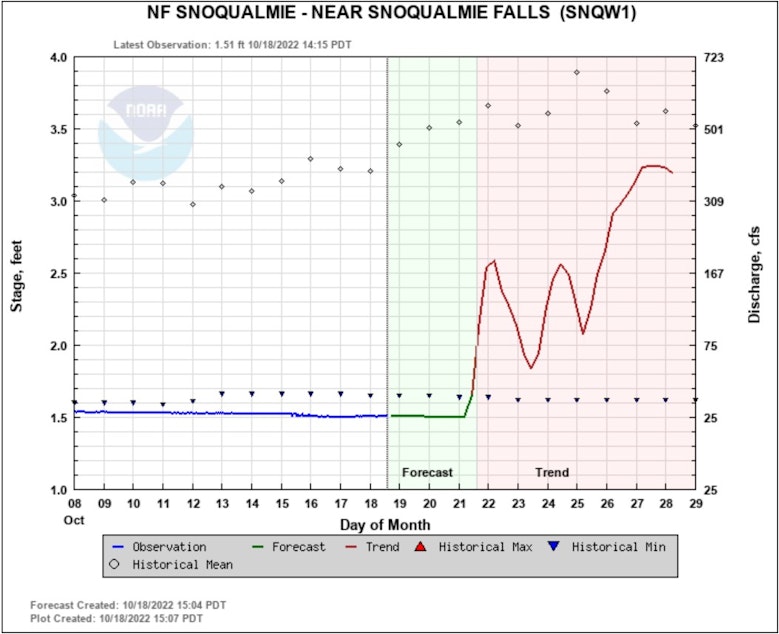Disappointed inner tubers and beat-up salmon: observations from a dry year

This summer was Washington’s driest on record, as measured at Sea-Tac. Early October usually brings rain, but not this year.
All over Western Washington, rivers are setting new records for low flow.
In October, Snoqualmie Falls is crowded with tourists hoping to see the majestic waterfall thundering back to full strength. This year, they may be disappointed, because it’s about half its normal size.
The Snoqualmie River is lower than it’s ever been in recorded history. That's true for all three forks of the river that feed into the famous waterfall.

The reason is the lack of rainfall this year. Since the Fourth of July, we haven't even seen a full inch.
This past weekend, people who live and work near the Snoqualmie River sent KUOW audio postcards and photos documenting their observations on different sections of the river.
Richard Scheel noticed the low flow on the Snoqualmie River in September, while watching people try to float down the river near his home. They'd get stuck on the rocks, he said.
"They have to climb out of their inner tube and just walk their inner tube over the rocks to get to the next open section," Scheel said.
Richard Scheel on the banks of the Snoqualmie on Oct 15, 2022
Katie Klahn, standing on the bank of the river's south fork, lamented, “I’ve never seen flows this low in this fork of the river. And it makes me a little worried for the salmon especially. This is when they need the water the most.”
Katie Klahn on the banks of the Snoqualmie on Oct 15, 2022
David Haakenson, owner and operator of Jubilee Farm in Carnation, said the irony of low water is that, because it hasn’t rained in such a long time, farmers need to rely on the river more to irrigate their fields, making a bad situation worse.
“We haven’t had a significant rainfall in the last three years and I know there is some talk about bringing more land under irrigation, like hay fields, that were never irrigated in the past,” Haakenson said in an email.
He said more water needs to be stored in the winter to help alleviate low flows in the summer as climate change makes the weather conditions in both seasons more extreme “to help farmers, fish, the environment, human activity.”
Below Snoqualmie Falls, many areas usually available for spawning salmon are high and dry.
Sponsored
And it’s not just on the Snoqualmie. All over Western Washington, rivers are setting records for low flow. Most coastal rivers were closed to recreational fishing in early October to give struggling fish a little help.
Patrick Crain, a fisheries biologist for Olympic National Park, said there’s a series of small waterfalls cut through bedrock on the Sol Duc River that Coho salmon have to climb up to get to their spawning grounds.
This year, there’s not enough water for that.
“When they don’t make it, they end up tumbling down the rocks and getting beat up and then they rest for a bit and they try again,” he said.
Below: In a video by photographer John Gussman, salmon struggle to ascend the Sol Duc River during early October 2022's severely low flow.
While they’re resting below the falls, predators scoop them up and eat them. It’s not a safe place.
“The thing I took comfort in – is the fish can hold on for awhile," Crain said. "So as long as we get some rain here in the next week or two – the fish will make it up.”
But if there’s no rain, they’ll spawn down below, where the habitat is inferior, and fewer of them will survive.
So, let’s hope for rain.




